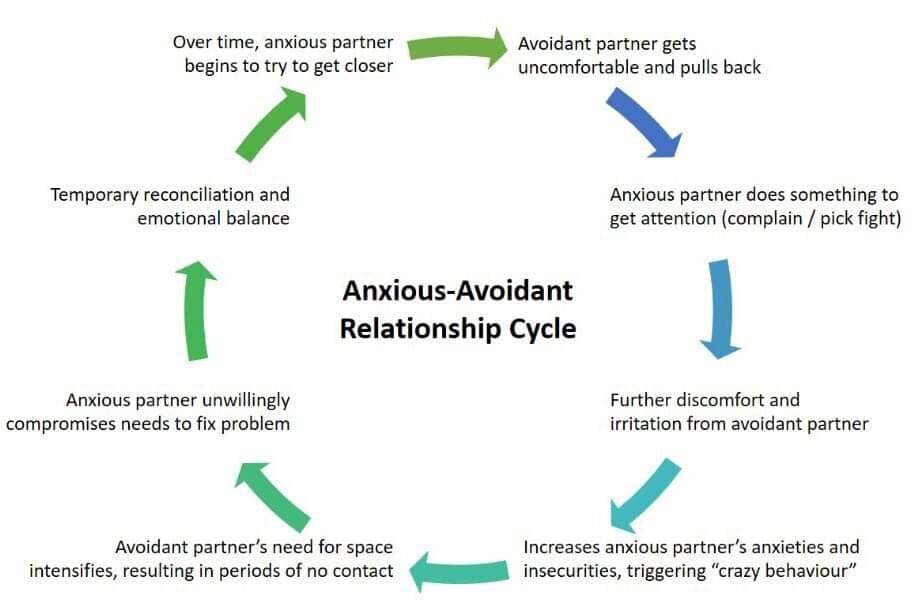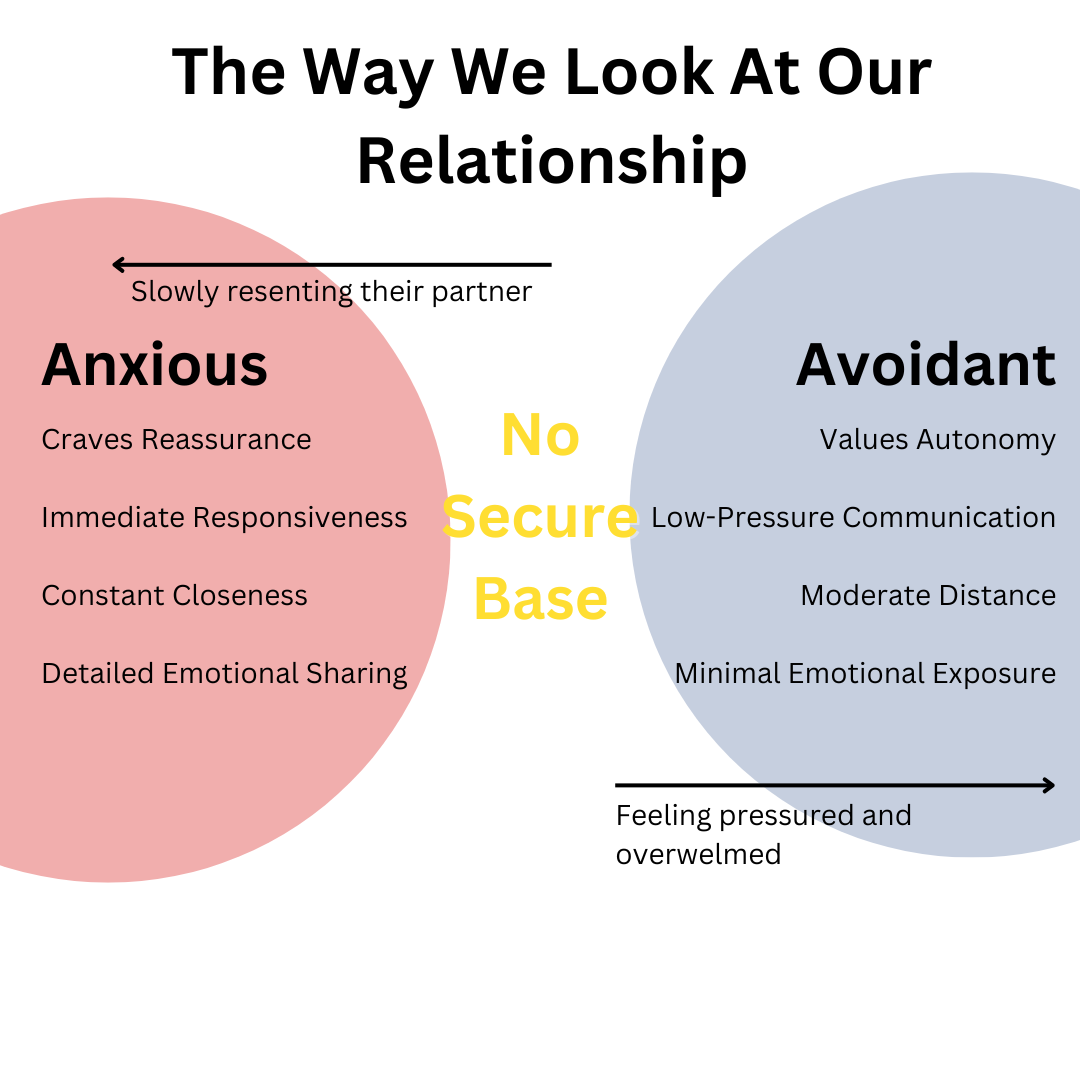Attachment Theory: How It Shapes Your Relationships

Ever wondered why some people crave constant closeness in relationships, while others seem to pull away the moment things get serious? Or why breakups hit some like a wrecking ball while others move on as if nothing happened?
The answer lies in attachment theory—a psychological framework that explains how we connect (or struggle to connect) with others based on our early experiences.
For years, I thought being avoidant was my superpower. I prided myself on being independent, never needing anyone, and keeping my emotions in check. It worked—until it didn’t. Relationships felt like a trap, and I couldn't understand why I kept pushing people away.
Understanding attachment theory changed everything. And that’s what this guide is here to do for you. Whether you’re trying to understand yourself, your partner, or an ex, this page will give you clear, science-backed insights to help you navigate love and relationships with confidence.
The Science of Attachment
Ainsworth’s Strange Situation: How It All Started
Back in the 1970s, psychologist Mary Ainsworth conducted an experiment called the Strange Situation to observe how infants reacted when their caregiver left and then returned. The results? Groundbreaking.
Ainsworth discovered that children generally fell into four attachment categories, which surprisingly continue to shape how we connect with others as adults (Ainsworth, Blehar, Waters, & Wall, 1978)
The Secure Base Concept
John Bowlby, the father of attachment theory, introduced the idea that a healthy attachment figure acts as a secure base—a safe foundation from which a child (or adult) can explore the world (Bowlby, 1988).
In relationships, a secure base means having a partner you trust, someone who supports your independence while still making you feel emotionally safe. But when that base is shaky (or missing), it creates attachment struggles that affect everything from communication to breakups.
The 4 Attachment Styles & How They Show Up in Relationships
Most people fit into one of these attachment styles:
Secure Attachment
- Comfortable with intimacy and independence.
- Communicates openly, trusts easily.
- Handles conflict in a balanced way.
- Estimated to occur in about 50-60% of adults (Mickelson, Kessler, & Shaver, 1997).
Anxious Attachment
- Craves closeness and fears abandonment.
- Often worries about being unloved or not enough.
- May overanalyze texts and need constant reassurance.
- More likely to experience emotional dysregulation in relationships (Shaver & Mikulincer, 2002).
Avoidant Attachment
- Values independence over intimacy.
- Pulls away when things get too emotional or intense.
- Struggles with expressing feelings or committing.
- Associated with lower levels of emotional engagement (Fraley & Shaver, 2000).
Disorganized Attachment (Fearful-Avoidant)
- A mix of anxious and avoidant traits.
- Wants closeness but fears being hurt.
- Hot-and-cold behavior, unpredictable responses.
- Often linked to unresolved trauma or inconsistent caregiving (Lyons-Ruth & Jacobvitz, 2008).
The Anxious-Avoidant Trap: A Painful Push-and-Pull
Imagine this: You’re in a relationship where one person is constantly reaching out for reassurance, wanting closeness and emotional depth, while the other is instinctively pulling away, needing space and independence. The more the anxious partner pursues, the more the avoidant partner distances themselves. This cycle repeats until one partner feels abandoned, and the other feels suffocated.

This dynamic is called the anxious-avoidant trap, and it’s one of the most emotionally exhausting relationship patterns. The anxious partner often thinks, If I just prove my love, they’ll finally let me in, while the avoidant partner feels, If I just get enough space, I’ll feel safe in this relationship. Neither side truly wins, because they are unknowingly reinforcing each other’s deepest fears.
As someone who leaned avoidant for years, I can tell you: it’s not about not wanting love—it’s about fearing what love demands. And for the anxious partner, it’s not about being needy—it’s about wanting security and connection.
Breaking free from this trap means recognizing the cycle and learning how to create safety in the relationship without triggering abandonment or engulfment fears.
The Lens Theory: Why You Don’t Have a Communication Problem—You Have an Understanding Problem
Many people think their relationship struggles are due to communication issues. But here’s the truth:
You don’t have a communication problem—you have an understanding problem.
Each attachment style comes with its own lens—a way of seeing love and connection.

Anxious partners see love as closeness and reassurance.
Avoidant partners see love as freedom and space.
Secure partners see love as trust and connection.
I once worked with a client, Rachel, who constantly felt unheard in her relationship. She would express her feelings, but her partner, Tom, would respond logically rather than emotionally. She saw this as him not caring—but for Tom, he thought he was helping by offering solutions rather than comfort. Their issue wasn’t communication—it was not understanding each other’s lens.
Once Rachel learned that Tom’s avoidant lens processed emotions differently, and Tom realized that Rachel’s anxious attachment needed emotional validation first, everything shifted. Their relationship improved not because they changed who they were, but because they started seeing through each other’s lenses.
Can Attachment Styles Change?
Absolutely. You’re not “stuck” in your attachment style forever. With self-awareness and intentional effort, people can move toward earned secure attachment (Roisman et al., 2002).
How to Move Toward Secure Attachment
- Recognize your attachment patterns.
- Learn how to self-soothe and regulate emotions.
- Improve communication based on understanding, not assumptions.
- Choose partners who encourage secure attachment behaviors.
Further Reading: Articles to Explore
To deepen your understanding, here are some articles you might find valuable:
- The Science of Attachment Styles: What Research Says
- How Avoidants Experience Love and Breakups
- The No-Contact Rule: Does It Work for Different Attachment Styles?
- How to Heal an Anxious-Avoidant Relationship
Final Thoughts
Attachment theory isn’t just an academic concept—it’s a lens that can change the way you approach love, conflict, and connection. Whether you're anxious, avoidant, or somewhere in between, the goal isn’t to be “perfect” in relationships—it’s to understand yourself and your patterns so you can build something secure and fulfilling.
If this resonated with you, take the next step. Whether that’s diving deeper into attachment work, sharing this with a partner, or joining a community of people on the same journey—you’re not alone. Secure attachment is possible. And it starts here.